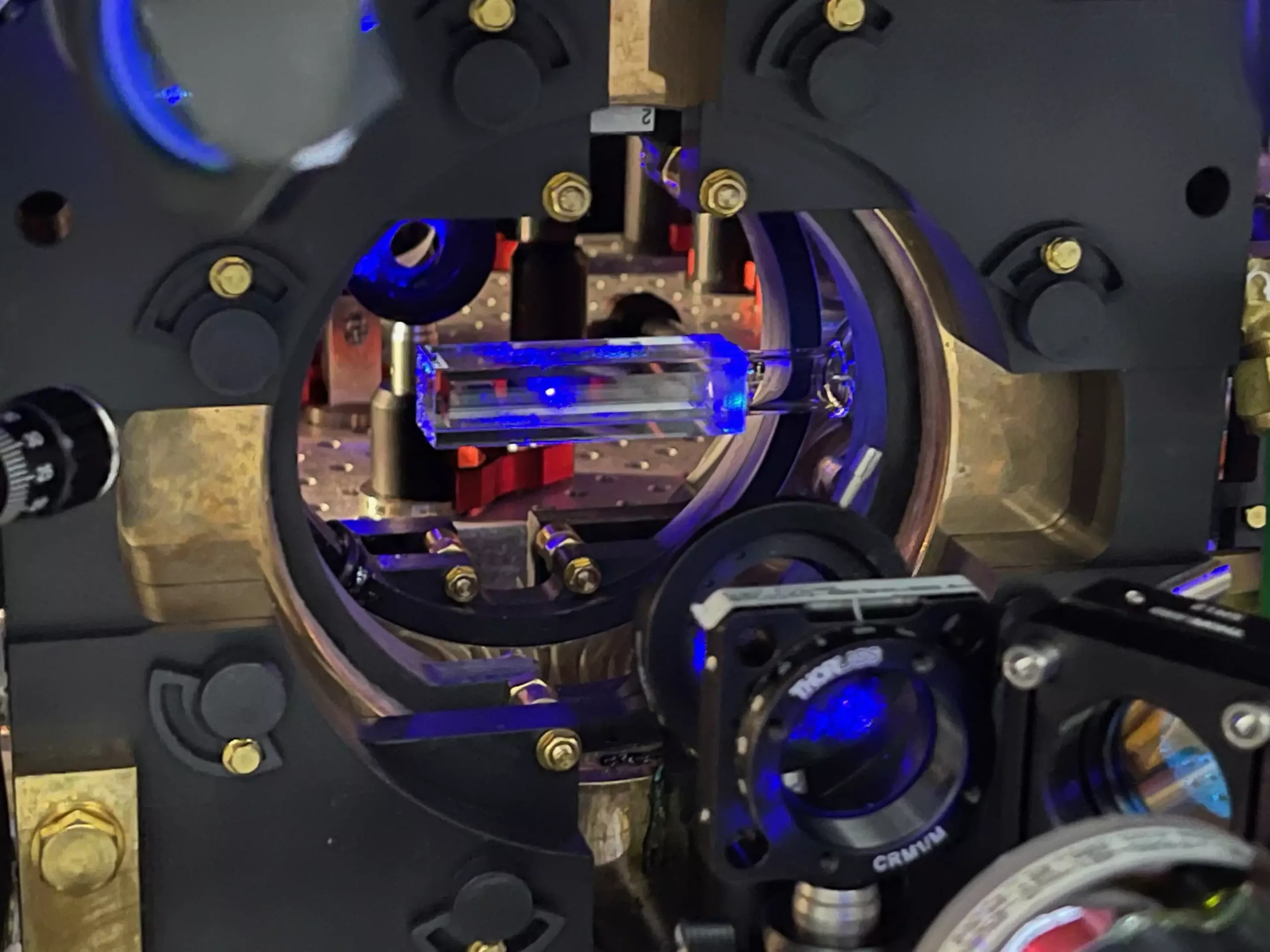Quantum physics has always been at the forefront of scientific exploration, delving deeper into the microscopic properties of materials. Recent advancements in analog quantum processors have paved the way for the development of quantum-gas microscopes, offering a powerful tool for understanding quantum systems at the atomic level.
The Birth of QUIONE: A Quantum-Gas Microscope
ICFO researchers from Barcelona, Spain, led by ICREA Professor Leticia Tarruell, have taken a significant step forward in this field by building their own quantum-gas microscope named QUIONE. The uniqueness of QUIONE lies in its ability to image individual atoms of strontium quantum gases, making it the only one of its kind in the world and the first in Spain.
What sets this experiment apart is the team’s groundbreaking achievement in bringing strontium gas to the quantum regime, placing it in an optical lattice, and applying single atom imaging techniques. The combination of these elements has made ICFO’s strontium quantum-gas microscope truly unique.
Exploring Strontium’s Potential
The decision to focus on strontium as the target element for quantum simulation was a strategic one. Whereas previous microscope setups had relied on alkaline atoms like lithium and potassium, the distinct properties of strontium provided a new avenue for exploration. Strontium’s unique attributes have made it a popular choice for applications in the realms of quantum computing and quantum simulation.
The journey to creating QUIONE involved a series of precise steps. By lowering the temperature of the strontium gas and utilizing laser beams to slow down the atoms to near absolute zero, the researchers were able to initiate the quantum regime where atoms exhibited new behaviors such as quantum superposition and entanglement. The activation of the optical lattice further facilitated the study of quantum dynamics between atoms, mimicking the behavior of electrons in certain materials.
With their quantum-gas microscope ready, the researchers captured images and videos of the strontium quantum gas, observing the atoms’ quantum behavior in action. The phenomenon of quantum tunneling became apparent as atoms occasionally jumped between lattice sites, showcasing their inherent quantum nature. Additionally, the confirmation of the strontium gas as a superfluid, a quantum phase of matter that flows without viscosity, highlighted the potential of QUIONE in unlocking new discoveries in quantum physics.
As Prof. Tarruell expressed, the addition of strontium to the list of available quantum-gas microscopes opens up possibilities for simulating more complex and exotic materials in the future. With new phases of matter expected to emerge, the field of quantum physics is poised for exciting developments.
The development of quantum-gas microscopes like QUIONE marks a significant milestone in the realm of quantum physics, allowing researchers to explore the intricate world of quantum systems at the atomic level. With each new discovery and innovation, the future of quantum physics continues to expand, offering profound insights into the fundamental nature of matter and energy.


Leave a Reply